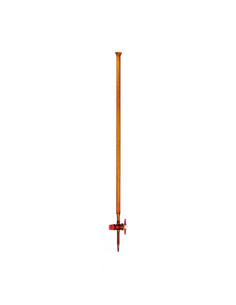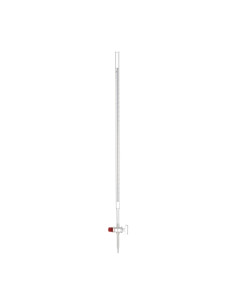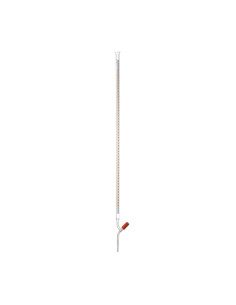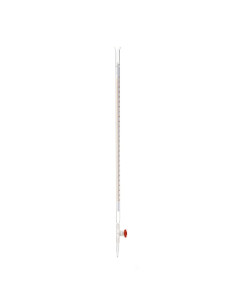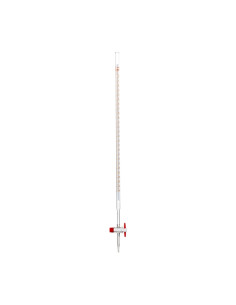Burettes are crucial tools in chemical analysis, especially in the titration process, where their high precision is indispensable. These instruments allow a controlled administration of liquid reagents, facilitating the accurate measurement of volumes that are essential for calculating the concentrations of various solutions with precision. Their specific design and detailed graduations on the burette ensure that chemists can achieve consistent and reliable results, which is essential for research and quality in chemical processes.
What are laboratory burettes like?
Burettes are cylindrical, slender instruments typically made of clear glass to facilitate accurate reading of volumes. This transparency is crucial to ensure accurate measurements during chemical experiments. In addition, they have detailed graduated scales along their length, allowing users to accurately dispense and measure specific amounts of liquid, an essential detail for procedures such as titrations that require high accuracy.
What are laboratory burettes used for?
Burettes are widely used in a variety of sectors, demonstrating their versatility and value in precise applications:
- Analytical chemistry: they are essential for performing titrations, a technique that determines the concentration of solutions. Their precision allows meticulous adjustments in chemical reactions to reach the desired equivalence point.
- Research and Development: in the creation of new chemical or pharmaceutical products, burettes are essential for accurately mixing reagents, facilitating the development of innovative and safe formulations.
- Education: in academia, burettes teach students precise liquid measurement and handling techniques, essential for future experiments and laboratory practice.
- Quality Control: in industry, burettes are used to ensure that chemicals meet strict specifications, ensuring consistency and quality of the final product.
Burette classes
Class A burettes
Class A burettes are laboratory instruments designed to provide maximum accuracy in the measurement of liquids. These burettes meet very strict specifications, set by international standards such as ISO, ensuring high volume accuracy. They are ideal for scientific applications where precision is crucial, such as chemical and pharmaceutical experiments that depend on accurate measurements for reliable results.
Class B burettes
Class B burettes are measuring instruments designed for laboratory applications that do not require the maximum accuracy offered by Class A burettes. These burettes have wider measurement tolerances, making them more suitable for general tasks where extreme precision is not critical.
How are laboratory burettes used?
Using a burette involves filling it with a titrant solution and adjusting the liquid level to zero before starting a titration. During the titration, the solution is slowly released and the colour change is observed or measured electrically until the end point is reached.
Is any certification required to use this type of material
Generally, no specific certification is required to use burettes in educational or basic research laboratories. However, in regulated environments such as the pharmaceutical or food industry, operators may need specific training to ensure compliance with quality and safety regulations.
Frequently asked questions
What is the capacity of the burette?
Burettes typically have capacities ranging from 10 ml to 100 ml, allowing users to choose the most suitable burette for the precision and volume required for their specific experiments. This variety ensures that both small and large amounts of solution can be titrated efficiently.
Burette accuracy
The accuracy of the burette is due to its meticulously precise design and detailed graduation along its body. This graduation enables extremely accurate volumetric measurements by allowing the user to measure and dispense liquids with a high degree of accuracy, which is essential for processes such as titrations in analytical chemistry, where every drop can significantly affect the outcome of the analysis.




